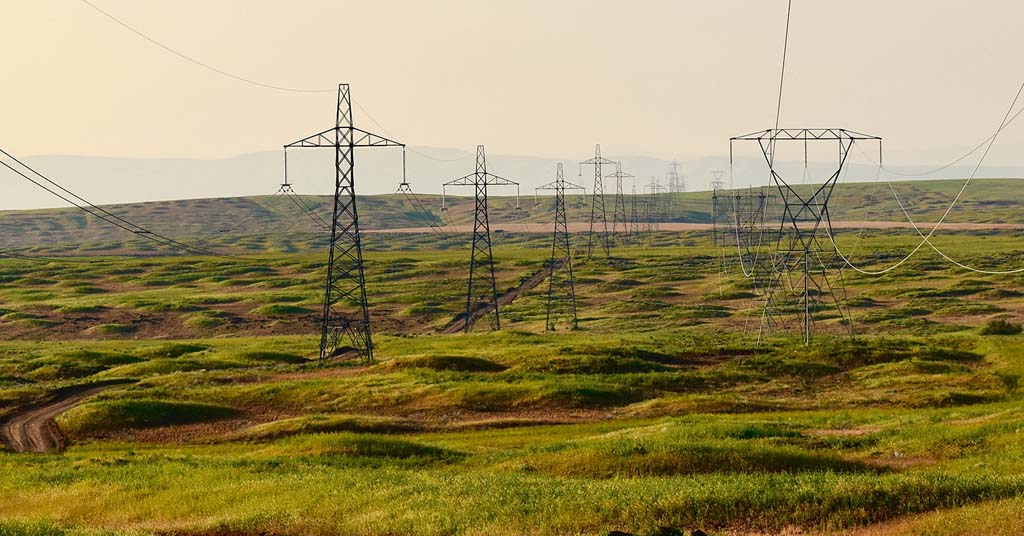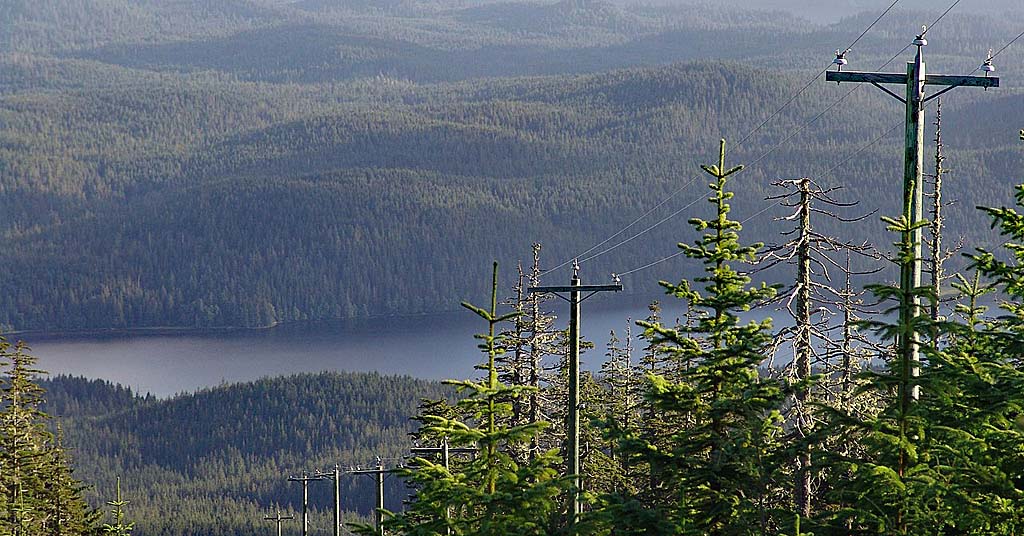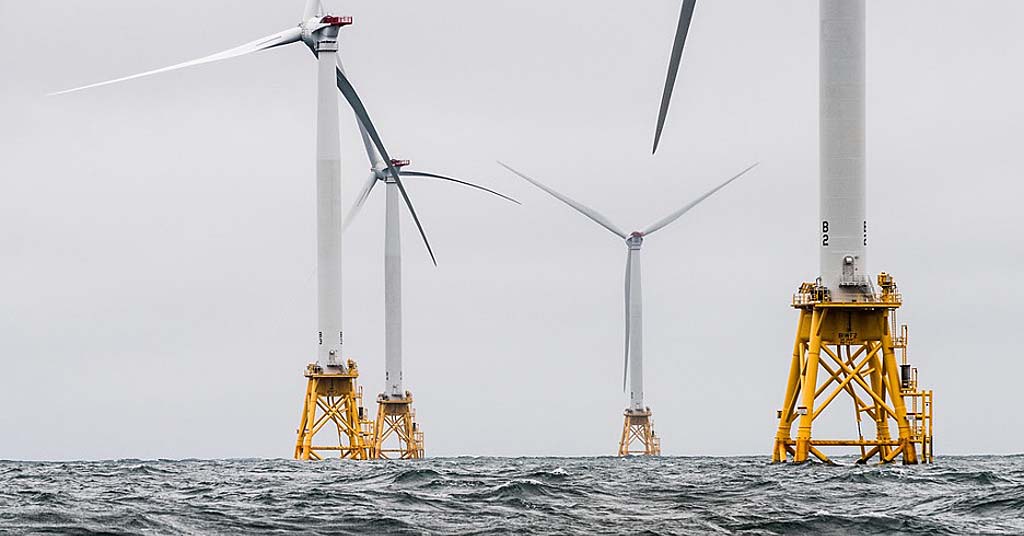By Dac Collins. June 13, 2019. “What’s happened is we’ve had a revolution,” he tells me from across the table. His voice packed with enthusiasm, a smile breaks out, causing him to squint.
Behind him, idle chatter from another table mixes with the harsh whirring of a coffee grinder. But his cheek-wrinkling grin is practically audible over the background noise as he continues:
“That revolution is the cost of wind and solar, which is now lower than the cost of other ways of producing electricity in much of the country and around the world. Now the question is: How do we make the best use of it?”
It’s a good question, and Ken Dragoon, the man grinning at me from across the table, is here to explain one potential answer to it. One of our planet’s most ubiquitous elements, it accounts for 10 percent of our mass as humans and is the primary ingredient found in water.
And according to Dragoon, it could be our best shot at making the transition to a renewable, carbon-free energy economy.
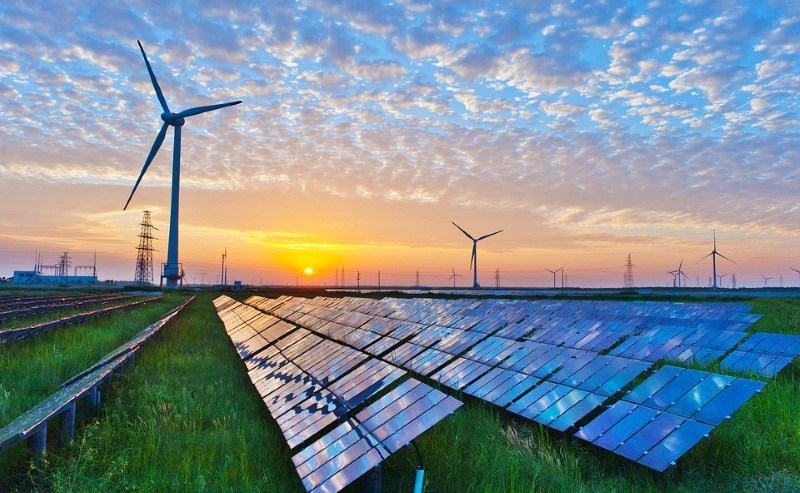
As more solar panels and wind turbines come online, the ability to store renewable energy becomes increasingly important. Photo courtesy of Wikimedia Commons
Over the course of the last two years, Dragoon has become a hype man of sorts, advocating for renewable hydrogen development in the Northwest as the executive director of the Renewable Hydrogen Alliance. A good chunk of his time is spent educating others (like myself) on the benefits of storing low cost, zero-carbon electricity as hydrogen.
“It’s wind and solar that are key,” he says.
[perfectpullquote align=”full” bordertop=”false” cite=”” link=”” color=”” class=”” size=””]“Hydrogen is just the missing puzzle piece that can spread that low-cost, low-carbon energy to the rest of the economy.”[/perfectpullquote]
A native Oregonian, Dragoon has spent his entire career (over 35 years) in the electric power industry, working as a planner, engineer and manager for PacifiCorp, Bonneville Power Administration and Renewable Northwest, among others. One of his primary focuses during that time has been figuring out how to harness and optimize the power that comes from sustainable but inherently variable sources like wind and solar.
“When we talk about wind and solar,” he explains, “most people talk about the problem of ‘what if it’s not sunny or not windy.’ But, arguably, the more interesting and challenging problem is the opposite: What happens when there’s more than what we need?”
Using the development of the Northwest’s hydroelectric infrastructure as an analogy, Dragoon explains that after building the first few dams on the Columbia, engineers realized that they weren’t capturing all of the available energy — especially during the springtime when the river would swell. This problem was addressed by a massive building effort to develop the large reservoirs in Canada in Montana, which can store this potential energy for months at a time and allow for a continuous but manageable supply of it to flow through the turbines.
Our energy grid faces a similar opportunity today, as a growing number of wind turbines and solar panels create a surplus of cheap electricity during certain times of the year. Without the ability to properly store it, however, this surplus loses value and goes to waste. And even though we are working to build better batteries while we simultaneously develop other methods such as compressed air and pumped hydro, Dragoon says these methods all have one problem in common: they fill up. And he points to the overwhelming cost of these systems, particularly batteries, as another limiting factor.
If the entire Northwest (Oregon, Washington and Idaho) were to run on 100% renewable energy, Dragoon explains, we would need to replace 13,000 average megawatts of fossil power plants with renewable energy. Of course that energy must be readily available, even during times when wind and sun may be entirely absent.
“But the cost of the batteries that would be needed to achieve this would be about a trillion dollars,” Dragoon says. “Which is about 25 times more than the cost of the renewables (wind turbines and solar panels) you’d put in to create the 100% renewable grid. Ain’t happening.”
The RHA’s solution to this storage dilemma is to take the surplus electricity and turn it into hydrogen. And as it turns out, we already have the technology needed to accomplish this.
Known as electrolysis, the process of using electricity to split water molecules (H20) into hydrogen (H2) and oxygen (O2) has been around for over 200 years. All that’s needed is an electrolyzer, which, “at its heart”, Dragoon explains, “is two wires and a bucket of water.”
The renewable energy industry is only now beginning to recognize the critical importance of using modern electrolyzers to convert electrical energy into storable hydrogen gas (and other climate-neutral fuels), which can either be used as a fuel on its own or turned back into electricity when necessary. This recognition led to a huge increase in the number of devices being built in Europe, and caused the cost of electrolyzers to drop rapidly.
Explaining how he became such a big proponent of renewable hydrogen, Dragoon says he was hired by NW Natural in 2017 to write a report on using electricity to make gas.
“I wasn’t expecting to learn anything new,” he says, “but what I discovered was that they were building these electrolyzers over in Europe. And as a consequence of that, the manufacturers were able to drop their prices.”
He says the reports he was reading from several years prior showed that the cost of operating an electrolyzer was approximately $2,000 per kilowatt. More recent articles, though, showed the costs dropping closer to $1,000 per kilowatt.
“I happened to be traveling to Europe that fall,” he continues, “and I got in to interview the CEO of Nel Hydrogen. And they said, ‘Well, our target is $200 a kilowatt, which can be achieved purely through economies of scale in production.’”
That’s when he “discovered what seemed to be inevitable”: that although the cost of electrolyzers is a barrier to large-scale implementation, “it’s one that’s being overcome by the economy of scale.”
“And I recognized that, having been in the renewable industry for 35+ years, none of my peers knew this any better than I did. So after I finished the report, I thought ‘we need advocacy around this.’”
The Renewable Hydrogen Alliance was formed four months later.
Now a full year into his advocacy work, Dragoon is just getting started. He meets regularly with policy makers throughout the region to promote hydrogen-friendly legislation, and he says the RHA was influential in the recent passage of Washington’s SB5588, which allows public utility districts to produce, distribute and sell renewable hydrogen .
“That bill,” he says, “was proposed by a Republican, Senator Brad Hawkins from east Wenatchee. It was signed into law by a Democratic presidential candidate, Jay Inslee, and it passed both houses of the legislature unanimously.”
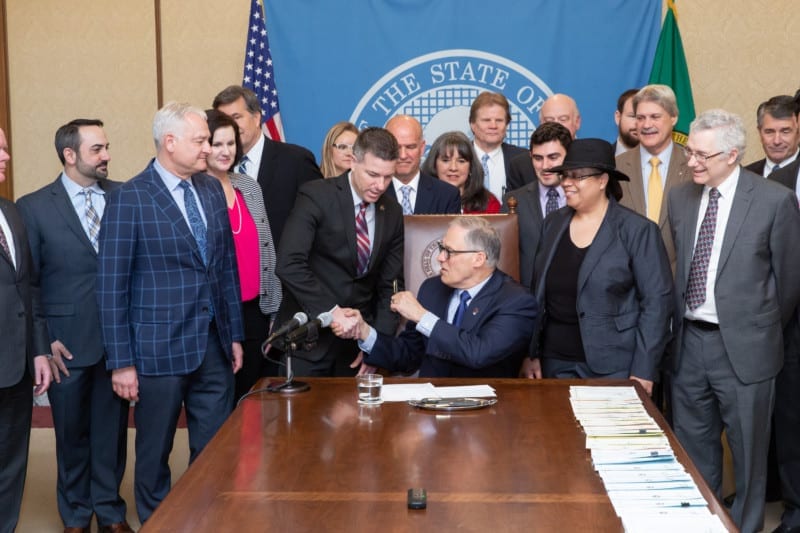
Wearing a grey suit and glasses, Dragoon (far right) smiles on as Gov. Inslee signs Senate Bill 5588, giving public utility districts the authority to produce, distribute and sell renewable hydrogen. Photo courtesy of the RHA
One of the main reasons this bill garnered bipartisan support, he says, is that renewable hydrogen makes sense, both from an economic and an environmental perspective. And for public utilities, industrial manufacturers and natural gas distributors, it opens up a world of possibilities.
“Hydrogen can be used for a number of different things and made into a number of products, basically without limit. We can use it for industrial processes, and for transportation,” he explains, pointing to some of the progress that has been made across the pond in recent years.
Germany, for example, already has more than 60 hydrogen fueling stations located across the country, and they launched the world’s first hydrogen-powered train in September of last year. Meanwhile, research from the UK shows that “renewable hydrogen is already cost competitive in niche applications,” and could replace industrial-scale alternatives within the next ten years.
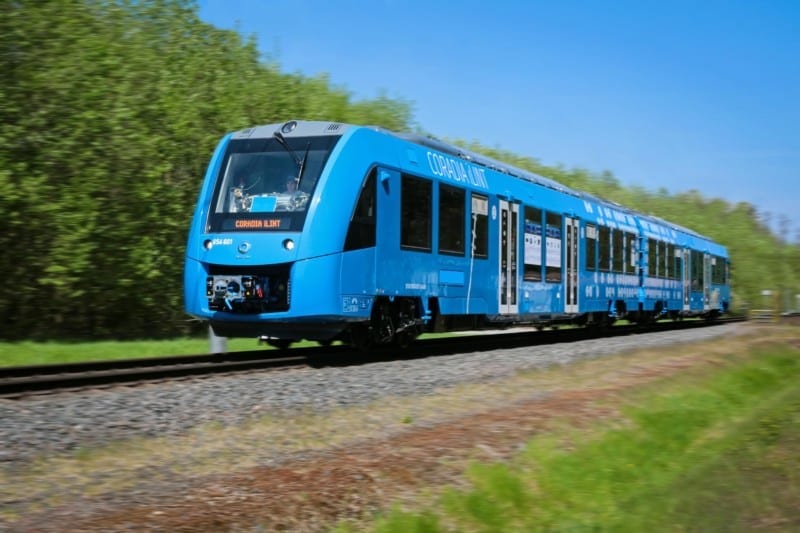
Manufactured in Salzgitter, Germany, two hydrogen-powered Coradia iLint trains have already replaced diesel-powered trains on a 62 mile route in Northern Germany. Photo courtesy of Alstom.
Unfortunately — and Dragoon knows this better than anyone — the United States is lagging behind most European countries in this arena, simply because “they are more enthusiastic about doing something about climate change,” he says.
“Even though Oregon and Washington have a better solar resource than Germany, they have more solar power than we do. In the Northwest, we’re at about 8% wind and solar. Then you look at Denmark’s electrical grid, which is already at 47% percent wind power.”
Dragoon says that if the US wants to come anywhere close to this number, we need to invest in more electrolyzer projects.*
“I would like to see at least 500 megawatts of electrolyzers go in in the next 5 years…but frankly, we have to do more than that.”
“I feel like the climate’s not waiting,” Dragoon says. “So neither am I.”
*This is the first in a series of articles about renewable hydrogen in the Northwest. In the next article, we will take a deeper look at what Oregon and Washington’s public utility districts and transportation sectors are doing in terms of renewable hydrogen development.




